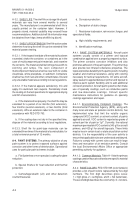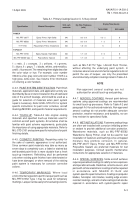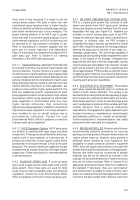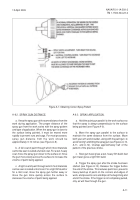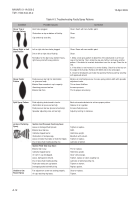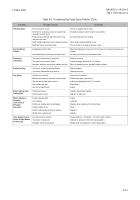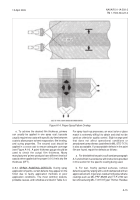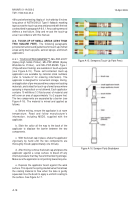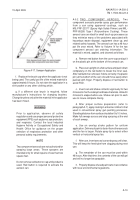TM-1-1500-344-23-2 - Page 181 of 240
A-11
NAVAIR 01-1A-509-2
TM 1-1500-344-23-2
15 April 2009
A-8.2. SPRAY GUN DISTANCE.
a. Keep the spray gun at the same distance from the
work during application. The proper distance of the
spray gun from the work varies with the spray pattern
and type of application. When the spray gun is close to
the surface being painted, it must be moved more
rapidly to prevent runs and sags. For most processes,
spray gun distance from the work should be
approximately 6-10 inches (see Figure A-8).
b. A full coat of paint through which most materials
cannot be seen is called a full wet coat. For a wet, heavy
coat, move the spray gun closer to the surface or move
the gun more slowly across the surface to increase the
volume of paint being applied.
c. A light coat of paint through which most materials
can be seen is called a mist coat. For a light film build or
for a mist coat, move the spray gun further away or
move the gun more quickly across the surface to
decrease the volume of paint being applied.
A-8.3. SPRAY APPLICATION.
a. Hold the paint gun parallel to the work surface so
that the spray is always perpendicular to the surface
being painted (see Figure A-9).
b. Move the spray gun parallel to the surface to
maintain the same distance from the surface. Move
both your arm and shoulder, along with the paint gun, to
avoid "arcing" and tilting the spray gun (see Figures A-10,
A-11, and A-12). Overlap approximately half of the
pattern of the previous stroke.
c. Slow gun travel gives a wet, heavy film build; fast
gun travel gives a light film build.
d. Trigger the spray gun after the stroke has been
started (see
Figure A-13). Release the trigger before
the end of the stroke. This reduces paint loss, prevents
heavy build up of paint on the corners and edges of
work, and prevents runs and drips at the beginning and
end of the stroke. If the trigger is not completely pulled,
only air will flow through the gun.
Back to Top


